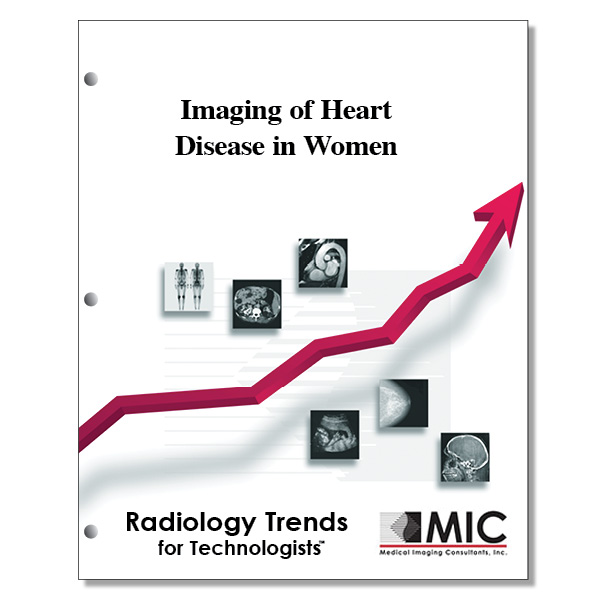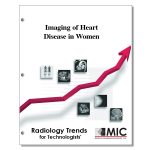

Imaging of Heart Disease in Women
A discussion of gender-specific challenges for non-invasive detection of heart disease in women.
Course ID: Q00528 Category: Radiology Trends for Technologists Modalities: Cardiac Interventional, CT, MRI, Nuclear Cardiology, Nuclear Medicine, Sonography4.0 |
Satisfaction Guarantee |
$39.00
- Targeted CE
- Outline
- Objectives
Targeted CE per ARRT’s Discipline, Category, and Subcategory classification for enrollments starting after March 18, 2024:
[Note: Discipline-specific Targeted CE credits may be less than the total Category A credits approved for this course.]
Cardiac-Interventional Radiography: 4.00
Procedures: 4.00
Diagnostic and Electrophysiology Procedures: 4.00
Computed Tomography: 3.00
Procedures: 3.00
Neck and Chest: 3.00
Nuclear Medicine Technology: 3.00
Procedures: 3.00
Cardiac Procedures: 3.00
Registered Radiologist Assistant: 4.00
Procedures: 4.00
Thoracic Section: 4.00
Outline
- Introduction
- Challenges of Noninvasive Detection of Heart Disease in Women
- Sex-based Differences in Anatomy and Physiology
- Radiation Exposure
- Pregnancy
- Sex-based Differences in Presentation and Pathogenesis of IHD
- Noninvasive Detection of IHD in Women
- Exercise ECG
- Stress Imaging
- Cardiac MR Imaging
- Coronary CT Angiography
- Nonischemic Cardiomyopathy
- Stress-induced Cardiomyopathy
- Sarcoidosis
- Chronic Inflammatory Diseases
- Heart Diseases in Pregnancy
- Normal Hemodynamic Alterations during Pregnancy
- Peripartum Cardiomyopathy
- Conclusion
Objectives
Upon completion of this course, students will:
- describe the percentage of patients with stress-induced cardiomyopathy who are women
- list the diseases whose combined female deaths in 2010 equaled that of cardiovascular disease
- list the differences in heart disease prevalence and prognosis between women and men
- describe the anatomic differences between men and women that would affect the diagnostic performance of ECG and cardiac imaging in women
- identify the female hormone that can cause false-positive exercise ECG changes in women
- describe the prevalence of obesity among adult women from 2010 to 2014
- list the CT image artifacts that can be caused by obesity
- identify the organization that issued new recommendations in 2007 regarding the tissue weighting factor for breast tissue
- list the organs that have a tissue weighting factor of 0.12
- list the imaging modalities considered to be first-line cardiac examinations during pregnancy
- describe the stochastic effects that may be caused by ionizing radiation
- identify the radiation dose model that applies to stochastic effects from ionizing radiation
- describe the dose of radiation that doubles the relative risk of childhood carcinogenesis from 0.1% to 0.2%
- describe the radiation dose threshold that is traditionally used when considering deterministic effects of ionizing radiation exposure
- identify the cardiac imaging modality that results in the highest fetal radiation exposure
- describe the trimester of pregnancy during which the ACR considers MR imaging safe
- list the recommendations for decreasing fetal specific absorption rate during MR imaging
- identify the FDA category of agents in which intravenous iodinated contrast agents are listed
- describe clinically significant CAD as defined by the American College of Cardiology
- describe the age difference between women and men and their presentation with IHD
- list the cardiac risk factors included in the term metabolic syndrome
- list the causes of hormonal alterations that may potentiate or amplify coronary microvascular disease in women
- apply the interaction of MBF and CFR to the evaluation of coronary blood flow
- identify the noninvasive test that has the lowest sensitivity for CAD in women
- identify the noninvasive test that has the highest specificity for CAD in women
- list the quantifiable physiologic parameters that are surrogate markers of microvascular function
- describe the diagnostic criteria for IHD at exercise ECG
- identify the noninvasive test that is valuable for ruling out obstructive CAD and predicting event-free survival
- identify the initial noninvasive test recommended by the AHA for women with adequate exercise capacity and a normal resting ECG
- list the diagnostic tools above which stress imaging provides incremental value
- list the diagnostic tests that should be considered for symptomatic women at intermediate to high risk for CAD with poor exercise capacity
- describe the imaging findings that form the cornerstone of diagnosis with SPECT and PET radionuclide MPI
- list the reasons why 99mTc radiopharmaceuticals are preferred over 201Tl for SPECT MPI
- list the superior characteristics of PET MPI when compared to SPECT MPI
- describe the mathematical process for quantification of CFR
- list the imaging modalities with a class I recommendation from the American Heart Association
- list the imaging modalities that offer the ability to quantify MBF
- describe the annual mortality rate among patients with normal CT angiography results
- describe the techniques with the potential to improve the diagnostic accuracy of coronary CT angiography
- describe the diagnostic criteria for stress-induced cardiomyopathy proposed by the Mayo Clinic
- describe the percentage of patients with sarcoidosis that demonstrates cardiac involvement at autopsy
- identify the test of choice for diagnostic evaluation of sarcoidosis
- identify the radionuclide imaging procedure with the highest sensitivity for detecting active myocardial inflammation in sarcoidosis
- list the traditional risk factors for CAD that may be seen in patients with SLE or rheumatoid arthritis
- describe the anatomic location for the more common granulomatous form of myocarditis in rheumatoid arthritis
- describe the prevalence of cardiovascular disease during pregnancy in the United States
- describe the increase in cardiac output seen during pregnancy
- list the cardiac valves that may exhibit transient and mild regurgitation during pregnancy
- list the factors that may predict a poor prognosis for women with peripartum cardiomyopathy
- identify the laboratory blood tests that are recommended for the assessment of peripartum cardiomyopathy
